When I first visited South Korea, I did what most first-timers do and stuck to the major cities, zipping between them on the famous KTX bullet train. But it wasn’t until my second trip that I stumbled across something I hadn’t paid much attention to before: the intercity bus terminal. Out of curiosity, I went to check it out, and that was when I realised just how many places you could reach by bus. I was pleasantly surprised to see how much more affordable the intercity buses were as a transportation option. Not to mention, it was easy to navigate!
Since then, the intercity bus system has become one of my favorite ways to explore the country. So, for anyone who hasn’t tried it yet, here’s a full guide on what to expect!
Also read: Explore Seoul, Busan, and Jeju with This 10D9N South Korea Itinerary.
Why take the bus in South Korea?
Most people automatically assume trains are the easiest way to travel around Korea, and for the big cities, that’s often true. The KTX is great for routes like Seoul to Busan or Seoul to Daegu. But if you’re hoping to visit smaller cities, countryside towns, or coastal areas, trains don’t always get you where you want to go.
That’s where the intercity bus system comes in. With routes that cover almost the entire country, buses can take you to places that the train lines don’t reach, and often at a fraction of the cost. Even better, buses run frequently throughout the day, making it easy to plan spontaneous day trips or change your plans on the fly.
Express vs intercity buses
One thing that confused me a little in the beginning was seeing both express buses and intercity buses when looking up routes. They sound similar, but they’re slightly different.
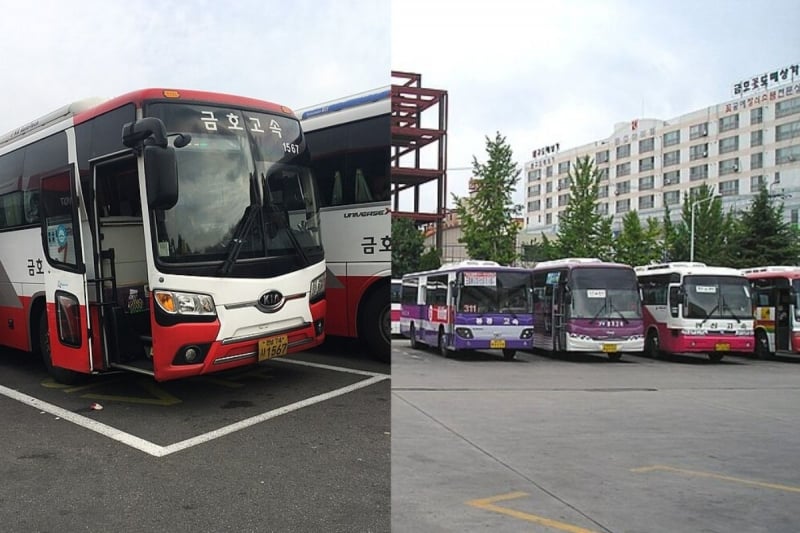
Image Credit: (L-R) revi via Wikimedia Commons; STA3816 via Wikimedia Commons
Express buses (고속버스) mostly run long-distance routes between major cities, like Seoul to Busan or Gwangju. They usually travel directly or with very few stops along the way, which makes them a bit faster. Intercity buses (시외버스), on the other hand, often connect smaller towns and regions, and they might make several stops as they go. If you’re heading to countryside areas, scenic towns, or anywhere a little more off the beaten path, you’re more likely to end up on an intercity bus.
That said, as a traveler, you honestly don’t need to worry too much about which one you’re taking. Once you know your destination, the booking process, terminals, and ticket system work more or less the same for both.
Also read: Everything That Went Wrong During My First Trip to South Korea.
Where do intercity buses depart from?
Once you start planning your trip, one of the first things you’ll notice is that most cities in Korea have their own dedicated bus terminals. In smaller cities, there’s usually just one main terminal, which keeps things pretty straightforward. But in bigger cities like Seoul, there are multiple terminals, and knowing which one to head to will save you a lot of confusion.
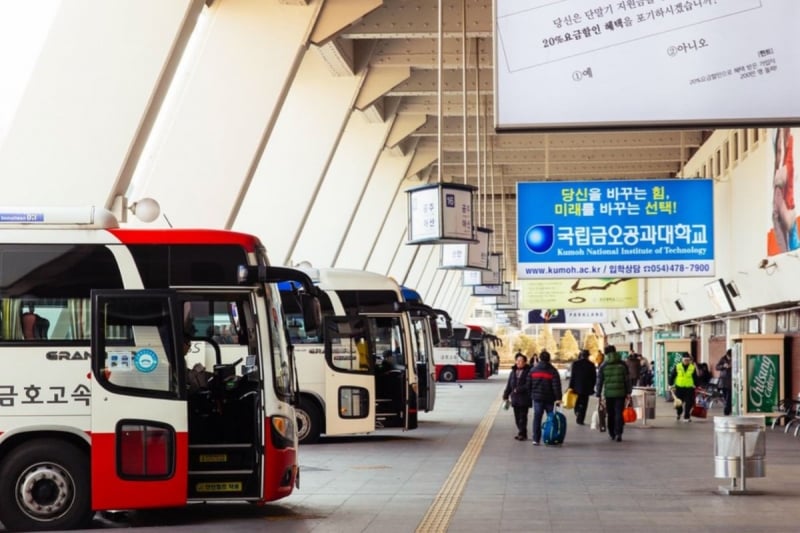
Image Credit: Seoul Korea | Flickr
For example, if you’re in Seoul, the Express Bus Terminal in Gangnam handles most routes heading south (like Busan, Gwangju, or Jeonju). On the other hand, the Dong Seoul Terminal near Gangbyeon Station is your go-to for eastbound destinations like Sokcho or Gangneung. If you’re unsure which terminal serves your route, apps like Naver Map or KakaoMap are super helpful for checking both the departure point and the schedule.
Once you get to the terminal, everything is quite organized. There are clearly marked counters, gates, and usually some English signage to help you along. After a while, you’ll find that navigating the terminals becomes part of the rhythm of intercity travel — a little routine that feels oddly satisfying.
Buying your ticket
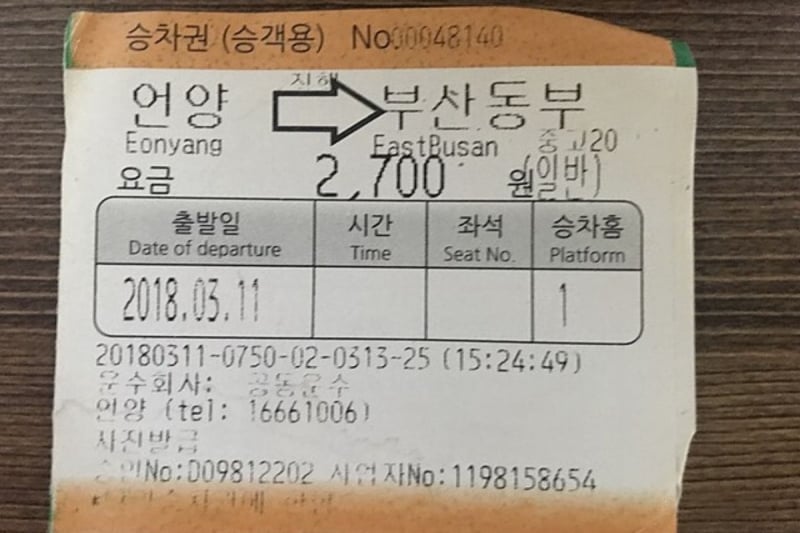
Image Credit: Jason6494 via Wikimedia Commons
Buying bus tickets in Korea is surprisingly simple, even if you don’t speak Korean. At the terminal, you’ll usually find both manned ticket counters and self-service kiosks. Personally, I found the counters easier, mainly because not all kiosks accept foreign cards, and sometimes it’s just easier to talk to a human (even if you’re mostly pointing at your destination).
All you need to do is tell them where you’re going, and they’ll show you the next available buses. Most routes have frequent departures throughout the day, so unless you’re traveling during a busy holiday period, you usually won’t need to wait too long. Once you pick your departure time, you’ll be assigned a specific seat, and the staff will print your ticket with your gate and seat number clearly stated.
You don’t need any special transit card (like T-money) for these buses — everything runs on individual tickets. And once you have your ticket in hand, you’re pretty much set until boarding time.
What the bus ride is actually like
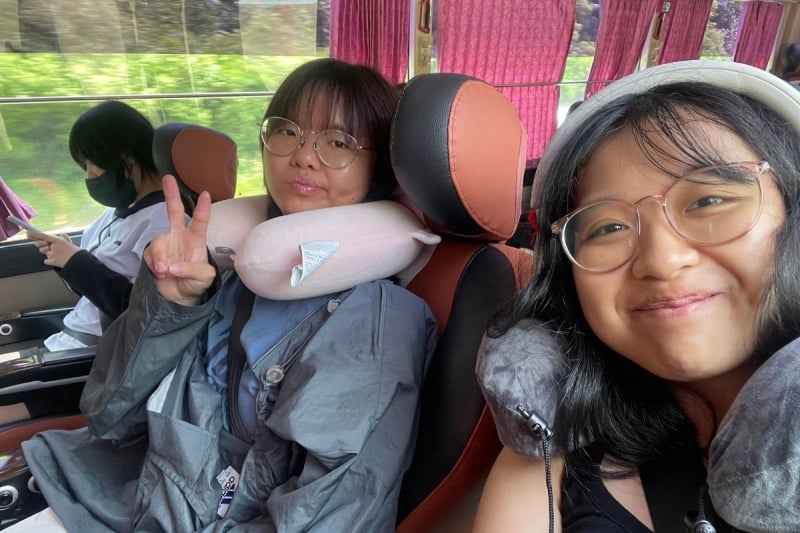
Neck pillows are a must!
Once it’s time to board, you just head to the gate listed on your ticket, scan your ticket at the machine (or show it to the staff waiting in front of the bus), and find your assigned seat. The boarding process is really smooth and very on time, so it’s always a good idea to arrive at the gate a bit earlier, just in case.
The buses themselves are honestly quite comfortable, even for longer rides. Most standard buses have a 2-2 seating layout, while premium or deluxe buses might offer a 2-1 configuration with more legroom and extra space. The seats recline nicely, there’s usually enough room for small bags in the overhead rack or at your feet, and larger luggage gets stored underneath the bus before you board.
That said, don’t expect a ton of extra luxuries. Most buses don’t have tray tables or charging ports (unless you book a premium class), and there are no toilets onboard. But if your trip is longer than around two hours, the bus will typically stop at a highway rest area where passengers can grab a snack, stretch their legs, and use the bathroom.
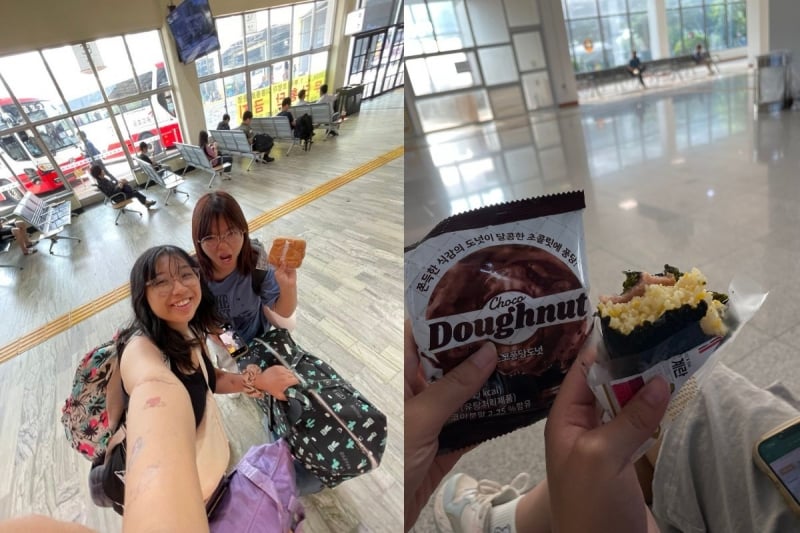
While not technically Korean, I think onigiris make great commute snacks.
Also, while it is not explicitly stated that you cannot eat on board, passengers generally do so discreetly. If it’s a longer ride and you know you will get peckish, dry snacks are fine as long as you clean up after yourself. But I preferred to just eat before boarding. There are usually convenience stores at the bus terminals.
Overall, it’s a very relaxed way to travel. You just sit back, watch the scenery roll by, and let the driver handle everything else.
Also read: Seoul Food: The Ultimate Singaporean Foodie’s Guide to South Korea’s Capital.
How much does it cost?
One of the biggest surprises for me was how affordable intercity buses are, especially compared to trains. Prices depend on the distance you’re traveling and whether you choose a standard or premium seat, but overall, it’s very budget-friendly, even for longer rides.
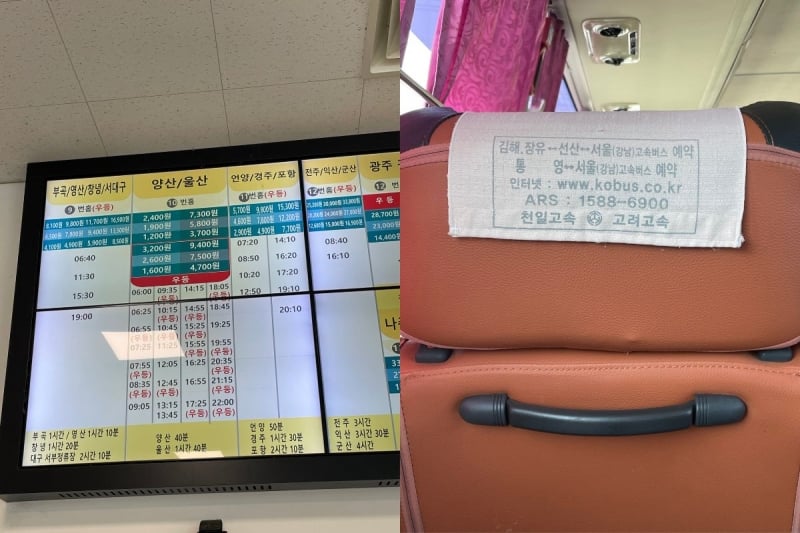
Papago’s your best friend.
For example, when I traveled from Busan to Daegu (about a one-hour ride), tickets cost around S$8.20 one-way. For longer trips, like Busan to Seoul (roughly 4 hours), I paid about S$35. In comparison, the KTX for the same route would have cost me around S$45.
The difference might not seem huge at first glance, but if you’re traveling for a few weeks and taking multiple day trips, those savings can add up. And if you’re a traveller on a budget, even small amounts can go a long way.
Overall, buses offer a great balance between price, convenience, and comfort, especially if you’re planning to visit multiple cities or want the flexibility to do spontaneous day trips.
Do you need to book tickets in advance?
One thing I appreciated about the intercity bus system was how easy it was to travel spontaneously. Most of the time, I didn’t have to worry about booking my tickets days in advance. I would simply show up at the terminal, buy my ticket on the spot, and usually be able to board a bus within 10 to 30 minutes.
That being said, there are a few situations where it’s safer to book ahead. For example, during major Korean holidays like Chuseok or Seollal, buses can get fully booked pretty quickly since many locals travel to visit family. Fridays and Sundays can also get busy, especially on routes back into Seoul as people return after a weekend trip.
But outside of these peak periods, the system is flexible enough that you can often plan your trip on the go without much stress, which is honestly part of what makes bus travel so appealing.
Final thoughts
If you’ve never taken an intercity bus in Korea before, it might feel a little unfamiliar at first. But once you try it, you’ll see how simple and accessible it actually is. The terminals are well-organized, the booking process is straightforward, and the rides themselves are relaxing.
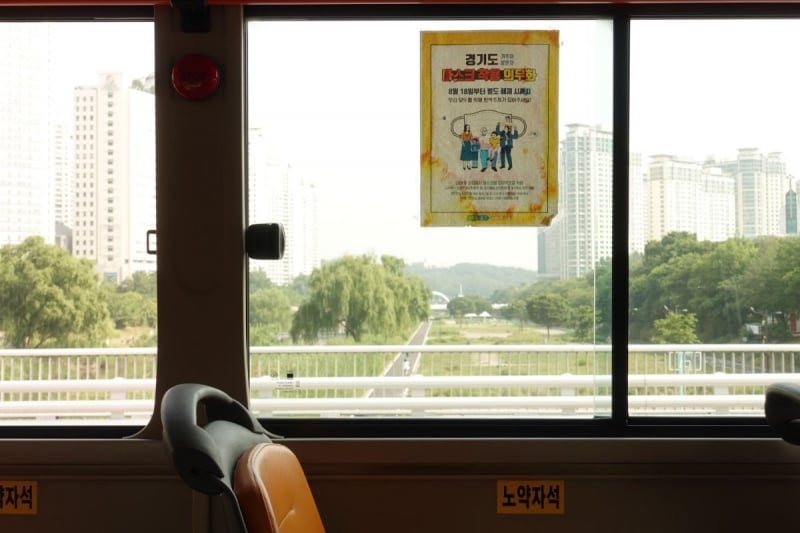
Image Credit: cyjenny125 via Canva Pro
In fact, one of my favorite parts about bus travel was simply watching the scenery go by at a slower pace. I love driving by green hills, quiet villages, farmlands, and mountain roads to the soundtrack of Hozier. Especially on longer rides, that quiet downtime became a nice reset between busier stops. You just sit back and let the route carry you to your next destination.
For me, what started as a bit of curiosity on my second trip quickly turned into one of my favorite ways to explore the country. It’s flexible, affordable, and opens up parts of Korea you might not have thought to visit otherwise. So if you’re planning to venture beyond the major cities, don’t sleep on the bus system; it might just surprise you, too.




